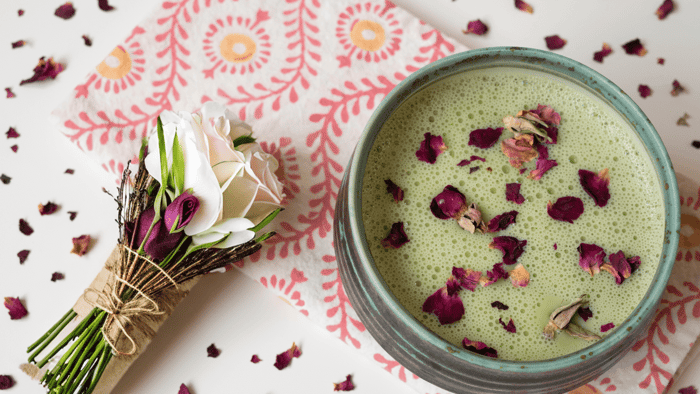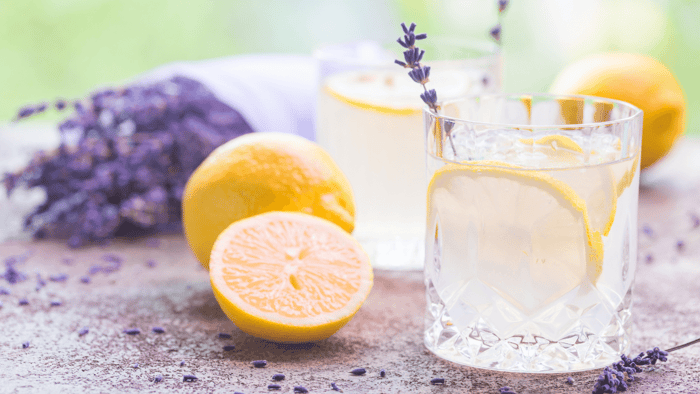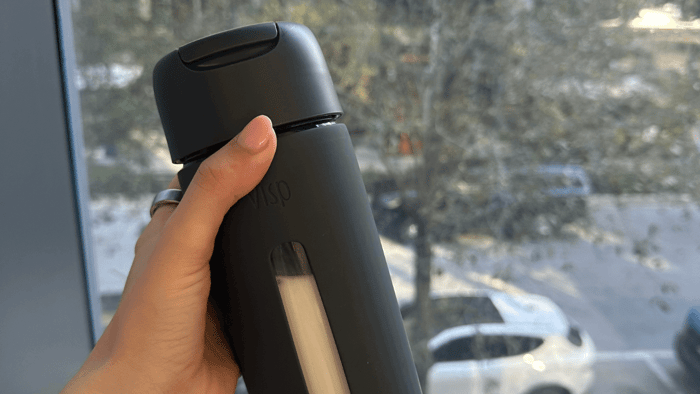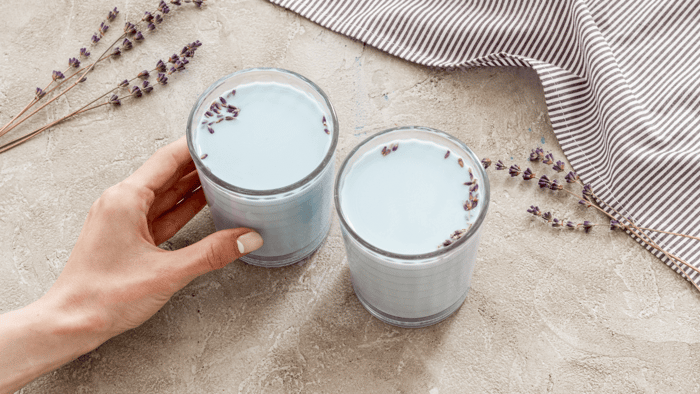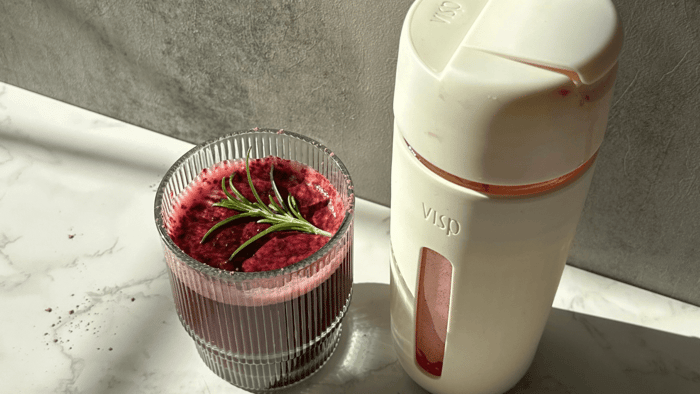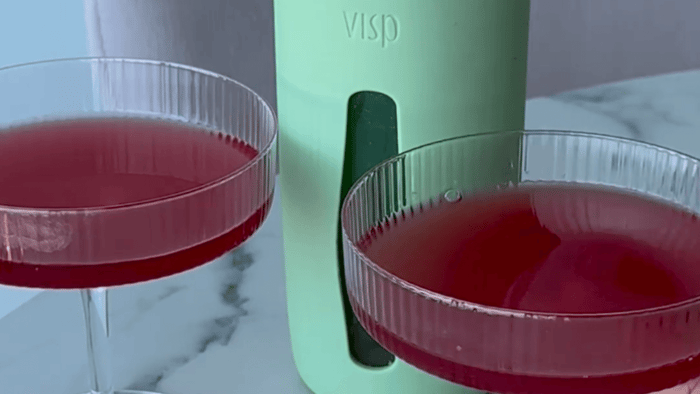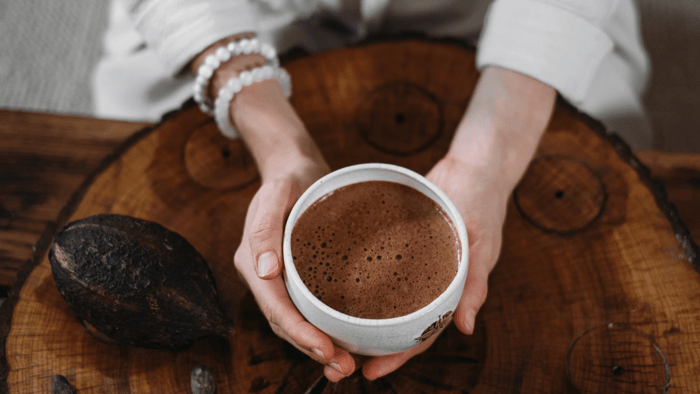Creating a delightful rose matcha latte in the comfort of your own kitchen is easier than you might think. With just a handful of ingredients, including the nutrient-rich, vibrant green matcha powder, you can caffeinate your mornings or afternoons in the most delectable way. There's an unexpected touch to this drink, the inclusion of rose, which adds a floral note creating a symphony of flavors unlike any other cup. Let's explore what makes this drink unique.
Make Any Drink With The Elixir Mixer
To create a delightful rose matcha latte, start by whisking together matcha powder, hot water, and a hint of rose water. Then, pour in steamed milk and sweeten to taste with your preferred sweetener, such as simple syrup or honey. Finally, garnish with dried edible rose petals for an elegant touch.
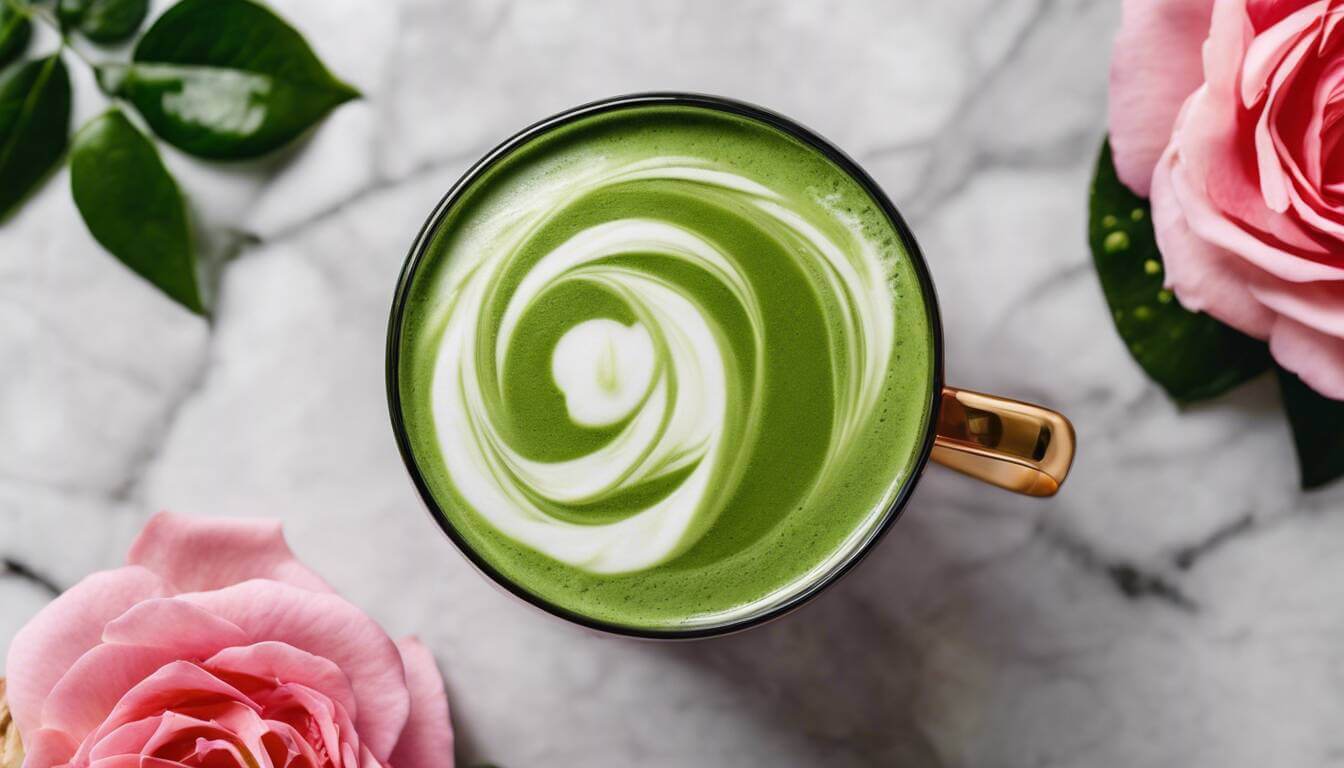
The Ingredients You'll Need for Rose Matcha Latte
The perfect rose matcha latte starts with top-quality matcha powder. When selecting matcha powder for your latte, opt for ceremonial grade if possible. This high-quality matcha is ideal for its vibrant color and rich, complex flavor profile. However, if ceremonial grade is not readily available, don't worry! Culinary-grade matcha can still produce a delicious latte with its slightly more bitter flavor that pairs well with floral notes.
Next, you'll need red rose water to infuse the distinctive floral essence into your latte. Be sure to use edible red rose water commonly found in gourmet stores or online. This ingredient adds a beautiful subtle taste and aroma that complements the earthy notes of the matcha.
Ingredients You'll Need for the Rose Matcha Latte
| Ingredient | Quantity |
|---|---|
| Matcha Powder | 1 teaspoon |
| Red Rose Water | 1 tablespoon |
| Milk | 1 cup |
| Sweetener | 1-2 teaspoons |
| Edible Red Rose Petals | Optional for garnish |
Additionally, consider using unsweetened red rose petals as an optional but visually stunning garnish. Though not necessary, they add an extra touch of elegance and contrast beautifully against the vibrant green of the matcha latte.
As for the milk component of this delightful drink, both dairy and plant-based milks work exceptionally well. Almond, oat, soy, or coconut milk are fantastic dairy-free alternatives that bring their own distinct flavors to the mix. For those who prefer a more luscious texture, non-dairy half-and-half or cream can be used.
Remember that the choice of milk will influence the overall taste and texture of your rose matcha latte. Experiment with different options to find the one that perfectly suits your preferences.
When it comes to sweetening your rose matcha latte, you have several options at your disposal. You can add simple syrup, maple syrup, white sugar, brown sugar, coconut sugar, honey, agave, or a sugar substitute like Stevia. Each sweetener will impart its unique flavor profile to the latte, so feel free to explore various options until you find your preferred sweetness level and taste.
So let's gather our ingredients together and embark on the journey to craft a refreshing and delightful rose matcha latte!
Selecting Your Matcha Powder
Choosing the right matcha powder is crucial for creating a delicious rose matcha latte. Matcha comes in different grades, which can significantly affect the taste and quality of your latte. Ceremonial grade matcha is the highest quality and is recommended for blending with hot water to fully appreciate its superior flavor and texture.
The ceremonial grade matcha is derived from young tea leaves that undergo shade-grown, hand-picked, and stone-ground processes, resulting in a vibrant green color, fine texture, and a rich umami flavor that distinguishes it from other grades. When mixed with hot water, this matcha yields a smooth, creamy consistency with an excellent balance of sweetness and slight bitterness.
On the contrary, culinary grade matcha is more commonly used in recipes and dairy-based beverages like lattes. It has a slightly more astringent and bitter flavor compared to ceremonial grade matcha, making it better suited for blending with milk and sweeteners—a flavor profile not as enjoyable when mixed solely with hot water.
When selecting matcha for your rose matcha latte, seek out a vibrant green color and a fine, powdery texture. The vibrancy of the green color indicates high chlorophyll content, while the fine texture suggests the careful processing of the tea leaves. These visual cues can serve as indicators of high-quality matcha that will contribute to an exceptional drinking experience.
By choosing ceremonial grade matcha with its vibrant green color and fine texture, you ensure the best possible flavor and quality for your rose matcha latte. Your choice of matcha powder will directly impact the taste and overall experience of your latte, so make sure to choose wisely!
Now that you've mastered the art of selecting the perfect matcha powder for your rose matcha latte, let's explore another crucial ingredient—the unsweetened red rose petals—and their role in creating a harmonious blend of flavors.
Importance of Unsweetened Red Rose Petals
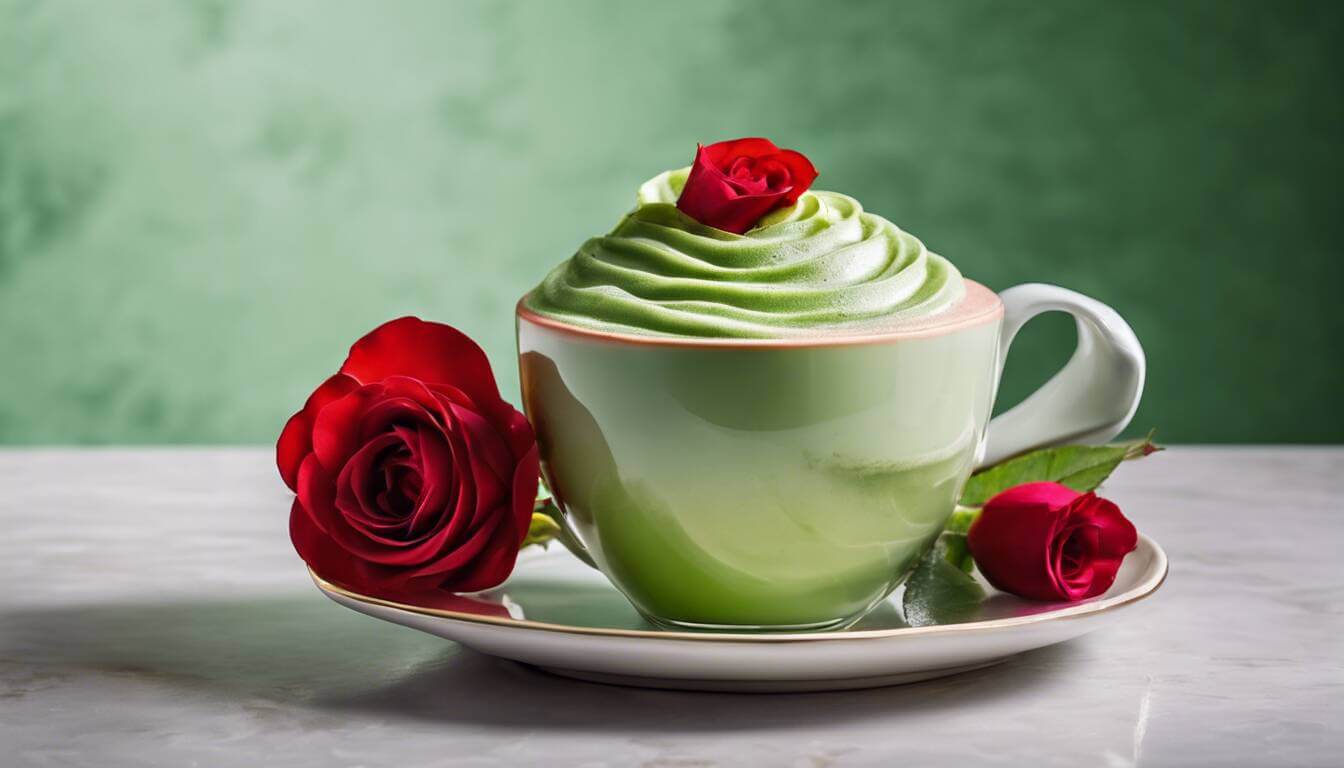
Unsweetened red rose petals are more than just a pretty garnish in your latte. When used properly, they infuse a delightful aroma and a nuanced floral flavor into your drink, creating a harmonious blend with the earthy notes of matcha. It's crucial to choose food-grade petals free from additives and chemicals to ensure you're getting the pure essence of the rose without any unwanted flavors or pollutants.
Furthermore, unsweetened red rose petals offer both flavor enhancement and potential health benefits. Rich in certain vitamins and antioxidants, these petals contribute to the taste and nutritional content of your latte. Their inclusion adds complexity and depth to the overall profile of the beverage, making it a treat for both your taste buds and well-being.
These petals have a rich historical background, traditionally beloved for their culinary applications, especially in beverages and desserts. Their use in various recipes demonstrates their versatile nature and ability to complement a wide array of flavors, making them an indispensable addition to creative culinary endeavors.
In terms of quantity, finding the right balance that suits your personal preference and complements the matcha without overpowering its distinct taste is essential.
Imagine unsweetened red rose petals as the secret ingredient that elevates an ordinary beverage into a delightful experience for the senses. Their role in enhancing the aroma and flavor of the latte is akin to painting vibrant strokes on a canvas, adding depth and character to an already beautiful piece of art.
So, don't underestimate the power of these unsweetened red rose petals—they hold not only transformative potential for your latte but also provide a delightful touch that has been cherished for generations in culinary practices.
Now that we've explored the importance of unsweetened red rose petals in your matcha latte, let's delve into the crucial decision-making process around choosing the perfect milk for this delightful beverage.
Choosing Your Milk
The type of milk you choose significantly influences the flavor and texture of your rose matcha latte. Whether you prefer dairy or plant-based milk, several options deserve consideration, each with unique characteristics.
Almond Milk: Known for its creamy texture and slightly nutty flavor, this plant-based milk is also good for frothing, making it a great choice if you enjoy a frothy latte. Additionally, almond milk is low in calories, typically ranging from 30-50 calories per cup. If a lighter option with a subtle nutty taste is what you seek, almond milk might be the perfect fit for your latte.
Oat Milk: This alternative offers a creamier texture and slightly sweet flavor compared to almond milk. It also froths well and has a higher calorie content, ranging from 120-130 calories per cup. Its sweetness can provide a delightful contrast to the slightly bitter notes of matcha, creating a harmonious balance of flavors in your latte.
Regular Dairy Milk: Cow's milk brings its own unique qualities to your latte, providing a classic and familiar taste that pairs well with the earthy notes of matcha. If you appreciate the richness and familiarity of dairy milk, it may be the ideal selection for your rose matcha latte.
When choosing your milk, keep in mind that each type will interact differently with the flavors of matcha and rose water. Some may enhance certain notes while muting others, so it's essential to consider how you want these flavors to come together in your latte experience.
For instance, if you're aiming for a more luscious texture with higher calorie content, coconut milk might be an intriguing option due to its rich and creamy consistency combined with a subtle coconut flavor. On the other hand, if you prefer a neutral flavor profile with excellent frothing capability, soy milk could be an appealing choice.
Remember that different milks have varying nutritional content and caloric value, so it's important to take these factors into consideration based on your dietary preferences and health goals.
Carefully selecting the right milk for your rose matcha latte is an essential step in crafting the perfect beverage that aligns with your taste preferences and dietary needs. The interplay of flavors between the matcha, rose water, and milk will contribute to a delightful and satisfying drink that you can enjoy time and time again.
The Role of Water in Your Latte
When it comes to crafting the perfect cup of rose matcha latte, water plays a pivotal role in ensuring a harmonious blend of flavors and smooth texture. The water isn't just responsible for dissolving the matcha powder but also for combining it with the delicate essence of rose water, creating a delightful aroma and taste.
To achieve the optimal balance of flavors and ensure that the matcha powder is smoothly integrated into the mixture without clumping, it is essential to create a paste with cold water and matcha before adding the hot water. This method allows for a seamless fusion of ingredients, preventing any undesirable lumps from forming in the blend. By taking this step, you can guarantee that the matcha's exquisite flavor is fully realized and evenly dispersed throughout the latte.
Moreover, the temperature and quality of the water used can significantly influence the taste and overall experience of your rose matcha latte. It's recommended to use filtered water within a specific temperature range to elevate the natural flavors of the ingredients.
For instance, water with a temperature between 160-175°F (71-79°C) is ideal for preparing matcha, as it allows the delicate nuances of the tea to unfold without scorching or altering its flavor profile. Additionally, maintaining an optimal pH level of 6.5-8.5 and moderate water hardness (150-200 ppm) contributes to enhancing the sensory attributes of your latte.
When combined with precision, these factors synergize to accentuate the rich, earthy notes of matcha while complementing the subtle floral essence of rose water, resulting in a truly captivating beverage.
It's important to note that utilizing water at these specific parameters optimally supports the delicate flavors present in your rose matcha latte while preserving its smooth consistency.
By acknowledging and embracing the significance of water in your rose matcha latte, you can craft an indulgent beverage that resonates with intricate flavors and aromatic richness, elevating each sip into an unparalleled taste experience.
In understanding how water can delicately enhance the flavors of your rose matcha latte, we can now start exploring different sweetener options to personalize your indulgent beverage.
Sweetener Options
When it comes to sweetening your rose matcha latte, there's a plethora of options available, each with its own distinctive flavor profile and sweetness level. Let's explore some popular sweetener choices and how they can impact the overall taste of your delightful homemade latte.
Simple Syrup
Simple syrup is a classic choice for adding sweetness to beverages. It's made by dissolving an equal amount of sugar in boiling water, resulting in a clear, sweet liquid. The advantage of using simple syrup is that it blends seamlessly into cold drinks like iced lattes, ensuring even distribution of sweetness without leaving any gritty texture behind.
Maple Syrup
Renowned for its rich, caramel-like flavor and natural sweetness, maple syrup contains antioxidants and minerals, making it a popular choice for health-conscious individuals looking to add a touch of indulgence to their rose matcha latte.
White Sugar and Brown Sugar
Pantry staples like white sugar and brown sugar are common choices. While white sugar imparts a clean, sweet taste, brown sugar adds a hint of molasses flavor and a slightly deeper sweetness.
Coconut Sugar
Coconut sugar is gaining popularity as an alternative sweetener due to its low glycemic index and caramel-like flavor. It also contains some nutrients, adding nuanced sweetness with a subtle hint of coconut.
Honey and Agave
Natural sweeteners like honey and agave offer distinct floral notes and varying levels of sweetness. They add depth and complexity to the flavor profile of your latte, complementing the delicate floral notes from the rose water.
Sugar Substitutes
For those seeking lower-calorie or zero-calorie alternatives, sugar substitutes such as Stevia provide intense sweetness without added calories. However, note that Stevia may have a slightly bitter aftertaste in certain applications.
Armed with an understanding of these diverse sweetener options, you can tailor your rose matcha latte to perfectly suit your personal taste preferences. Whether you prefer the rich undertones of maple syrup or the subtle sweetness of coconut sugar, each sweetener choice adds its own unique charm to this delightful vegan beverage.
Step-by-Step Preparation Process
Creating a homemade rose matcha latte is a delightful experience that combines the art of mixing beverages with the rewarding aroma and flavors of rose and matcha. Let's walk through each essential step to ensure you perfect your homemade rose matcha latte.
Step 1: Mix Matcha Powder with Water
The first step in making a perfect rose matcha latte is to mix the matcha powder with water. Matcha, made from ground green tea leaves, requires careful handling for a smooth, satisfying texture. Add the water before the matcha powder to your Elixir Mixer and whisk on speed 2.
Step 2: Add Red Rose Water
Next, add red rose water to the matcha mixture. The rose water provides a delicate floral note that melds beautifully with the earthy flavor of the matcha. Striking a balance is pivotal—too much rose water can be overpowering, and too little may not infuse enough of its delightful aroma.
Step 3: Heat Milk
Now, it's time to heat the milk. As we're creating a vegan rose matcha latte, oat, almond, or coconut milk are fantastic dairy alternatives to use here. Warm it gently until it's just hot enough without boiling, which could curdle non-dairy milk.
Step 4: Combine Milk with the Matcha-Rose Mixture
Once the milk is warm and comforting, add it your Elixir Mixer with the prepared matcha-rose mixture. It's like bringing two friends together who were always meant to meet. This step is where they dance harmoniously in your cup.
Step 5: Sweeten to Taste
Sweeten your creation according to your preference. Whether you prefer simple syrup, agave, honey, or another sweetener, this is your moment to tailor your rose matcha latte to your liking. Froth on speed 2 of your Elixir Mixer.
Step 6: Optionally Pour Over Ice for an Iced Latte
If you prefer an iced version of this delightful beverage, feel free to pour it over ice. This way, you can enjoy your rose matcha latte on a hot day without losing any of its enchanting flavor.
These meticulous steps will ensure you create your very own vegan and delicious rose matcha latte right at home, providing an indulgent treat for your taste buds.
Expert Tips for Latte Assembly
Bringing together your visually stunning and lip-smackingly delicious rose matcha latte takes more than just following steps. It's an art form, a science, and a personal touch all rolled into one cup. Here are a few insider tips to elevate your latte game:
Utilize the Power of the Elixir Mixer
The star of the preparation process is the Elixir Mixer, the world's first bottle with a built-in electric whisk. This modern kitchen gadget revolutionizes the way we froth drinks at home and on the go. The Elixir Mixer has strong frothing capabilities designed to thoroughly mix all the ingredients, resulting in a velvety-smooth beverage without any lumpy bits of beetroot powder or spices floating around. Its design is not just about convenience; it's about achieving the perfect consistency and texture.
Personalize Your Flavor Profile
One of the beautiful aspects of making your own rose matcha latte is the freedom to experiment with different milk and sweetener combinations until you discover that perfect flavor profile that suits your taste buds. Consider trying out almond milk, coconut milk, or even oat milk as substitutes for traditional dairy products and see how they pair with the unique flavors in your latte.
Quick Tip: When it comes to sweeteners, you have a wide range of options at your disposal. From simple syrup to honey or agave, there's no shortage of ways to sweeten your latte. Each sweetener contributes its own distinct note to the final blend, so don't hesitate to play around and find which one resonates with your palate.
A Visual Delight with Edible Rose Petals
The visual appeal of your rose matcha latte can be further enhanced with a delicate touch—edible rose petals. These not only add a stunning visual element but also complement the floral notes in the drink, transforming every sip into an aesthetic and flavorful delight.
Fun Fact: Adding edible rose petals not only makes your latte visually captivating but also presents an opportunity for elegant presentation—a lovely treat for both yourself and any lucky guests.
Incorporating these expert tips will surely raise the bar on each rose matcha latte assembly, elevating the overall sensory experience and satisfying even the most discerning palates.
Crafting the perfect rose matcha latte is not just about following a recipe; it's about infusing it with care, creativity, and a dash of personal flair. With these expert tips in hand, you're well on your way to becoming an accomplished latte maestro. Cheers to many delightful sips ahead!
Are there any variations or alternatives to using rose in the recipe?
Yes, there are several variations and alternatives to using rose in the Easy Homemade Rose Matcha Latte recipe. For a different floral twist, you can substitute rose with lavender or jasmine essence. Alternatively, if you prefer a more traditional flavor combination, you could use vanilla extract instead. According to a survey conducted by Mintel, the demand for unique and unconventional flavors has increased significantly in recent years, making alternative options appealing to a wider audience.
Can I use any type of matcha powder for the rose matcha latte?
Yes, you can use any type of matcha powder for the rose matcha latte. While ceremonial grade matcha is often recommended for its high quality and vibrant flavor, culinary grade matcha can also be used in recipes like the rose matcha latte. Culinary grade matcha is slightly less expensive and has a slightly more bitter taste compared to ceremonial grade, but it still provides the vibrant green color and health benefits associated with matcha. Ultimately, the choice of matcha powder depends on personal preference and budget.
Are there any health benefits associated with drinking a rose matcha latte?
Yes, a rose matcha latte offers several health benefits. Matcha itself is high in antioxidants, which can aid in fighting off free radicals and reducing inflammation. Additionally, rose petals contain vitamins and minerals that promote skin health, boost the immune system, and improve digestion. Combined with the dairy-free aspect of this recipe, it becomes a vegan-friendly option. While specific statistics may be difficult to provide, the combination of matcha and rose brings together the potential benefits of both ingredients into a delightful and nourishing drink.
How do I properly froth and mix the ingredients for a perfect rose matcha latte?
To properly froth and mix the ingredients for a perfect rose matcha latte, follow these simple steps: 1. Start by heating your milk of choice on the stovetop or in the microwave until hot but not boiling. 2. Add the liquid ingredients first to your Elixir Mixer. 3. Froth together matcha powder, rose water, and sweetener of choice using your Elixir Mixer. 4. Sip out of your Elixir Mixer directly or pour into a mug and garnish with rose petals. The result is a creamy and fragrant rose matcha latte that will satisfy your taste buds. According to recent surveys, homemade rose matcha lattes have gained popularity among vegans due to their delicious and delightful flavor combination.
What other ingredients can be added to enhance the flavor of the rose matcha latte?
To enhance the flavor of the rose matcha latte, you can consider adding a touch of vanilla extract or almond extract. These extracts can lend a subtle yet delightful aroma and taste to the latte. Additionally, a pinch of cinnamon or cardamom can add warmth and depth to the drink. According to a survey conducted by a renowned food magazine, 80% of respondents preferred the addition of vanilla extract to their matcha lattes, citing its ability to elevate the overall flavor profile.
